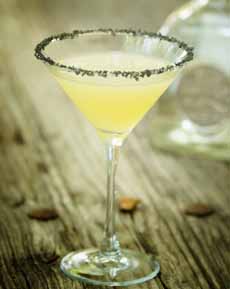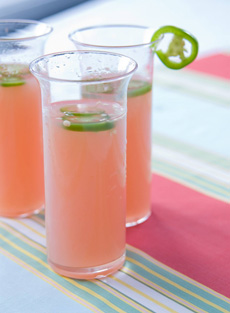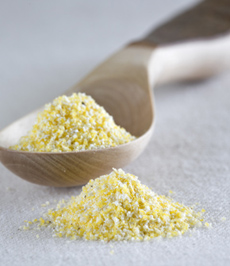|
February 22nd is National Margarita Day, which ties with the Martini for the most popular cocktail in the U.S.
We get lots of story pitches from public relations firms. Their job is to get coverage for their clients’ products.
Brands of spirits are always at the ready with cocktails for every celebration: New Year’s, Super Bowl Sunday, Valentine’s Day, Academy Awards and National Margarita Day—and that’s just in January and February.
One of the things that surprised us about this year’s National Margarita Day pitches was how many tequila companies called their recipes a Margarita.
The only kinship most recipes had to a Margarita was tequila.
NOT EVERY TEQUILA DRINK IS A MARGARITA!
This may sound logical. But one would really have to question the logic of the people who proposed these “Margarita” recipes that have no orange liqueur or relevant substitute, and a slice of lime.
We’ll protect the guilty; but our least favorite pitch was for an Apple Margarita made with tequila, apple schnapps and cinnamon sticks.
No orange liqueur, no lime juice. One might get thrown out of Mexico for insisting it’s a Margarita.
No doubt, we’ll be sent the same recipe in October called something like a Harvest Margarita, and again in November as a Pilgrim’s Margarita.
Or hold them for National Tequila Day, July 24th.
Simply adding tequila does not a Margarita make (see the history of the Margarita and the original recipe.)
Margarita ingredients include silver tequila, Cointreau or other orange liqueur, and lime juice, with a salted rim.
So substitute raspberry liqueur for the orange liqueur and call it a Raspberry Margarita.
Or use grapefruit juice instead of lime juice and call it a Grapefruit Margarita.
Or coat the rim with crushed salted nuts or even pepper (hmm, must try a Pepper Margarita).
Enjoy creative mixology; but don’t call something by a name it’s not, just to get the sale. That’s huckstering.
To show that we’re down with variations, here’s a Guavarita recipe (photo #3), courtesy of Chef Ingrid Hoffmann for the recipe.
It keeps the structure of the Margarita (tequila, fresh lime juice and fruit liqueur), substituting raspberry liqueur for orange and flavoring the rim.
If you need more inspiration, here are 26 Margarita recipe variations.
RECIPE: GUAVARITA, A GUAVA & JALAPEÑO MARGARITA
Ingredients For 4 Drinks
3 jalapeño chiles
1/2 cup plus 2 tablespoons tequila
1/2 cup plus 2 tablespoons lime juice (from about 5 limes), plus extra lime wedges for the glass rims
1/4 cup Cointreau or Grand Marnier
3 tablespoons guava juice
Coarse salt
Ice
|
|

[1] The Margarita: keeping it real (photo © Eugene Bochkarev | Bigstock Photo).

[2] A salt rim is optional on a Margarita. This classic Margarita is rimmed with smoked salt. For something special, you can also use hibiscus salt, pink Himalayan salt (photo © Casa Noble Tequila).

[3] A Guavarita: Margarita ingredients plus guava juice and jalapeno (photo © Chef Ingrid Hoffman).
|
Preparation
1. PLACE 2 whole jalapeños and the tequila in a small bowl. Cover with plastic wrap and set aside for 1 day.
2. POUR the infused tequila into a pitcher or large punch bowl and add the lime juice, Cointreau, and guava juice. Stir to combine and chill in the refrigerator.
3. SALT the rims of the glasses. Place the salt on a flat plate. Rub a lime wedge around the rim of each glass, turn it upside down onto the salt, and then twist the glass in the salt to coat the rim.
4. THINLY SLICE the remaining jalapeño. Serve the Margarita straight up in a Martini glass with some jalapeño slices floating in the glass. Or, slit one side of the jalapeño ring and hang on the side of the glass.
Consider today National Guavarita Day.
|






